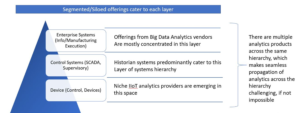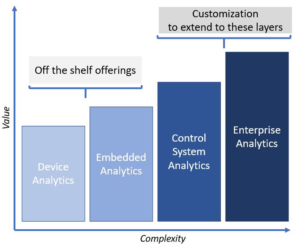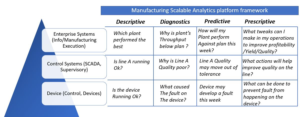Building Scalable Analytics Solutions : A Manufacturing Example
By Kumar Singh, Research Director, Automation & Analytics, SAPinsider
The killer of ROI on analytics investments – siloed solutions
Every white paper, think tank perspective, analytics body of knowledge, research- they are all screaming one thing loud and clear in your ear: Building analytical capabilities within your operations is a must to compete and thrive in today’s age of analytics explosion. Yet, most surveys and conversations that we conduct, whether at SAPinsider or done by any other entity, highlight one key aspect– a significant percentage of initiatives focussed on building internal advanced analytics capabilities do not deliver desired result. While this concern is primarily expressed in the area of advanced analytics like AI and ML, another key area where this happens a lot is operational intelligence.
There is no paucity of resources that organizations are willing to invest to build robust operational intelligence capabilities. Significant investments are being made in people, processes and technology- so then, where is the disconnect ? In my opinion, the disconnect is in the fact that the operational intelligence capabilities that we build are siloed. The drawback of these siloed solutions is that different “layers” in the organization may be seeing operations data from a totally different aspect, thereby creating confusion rather than efficiency. The need is to build “scalable” analytics solutions. The insights generated by these solutions can scale upwards and downwards to cater to multiple levels within an organization.
Explore related questions
In this article, we will leverage an example of manufacturing analytics to showcase what “scalable analytics” means. We will discuss how to architecture your manufacturing intelligence solutions so that they can “talk” to multiple layers in your organization.
An Overview of Manufacturing systems hierarchy
Stating that data is the fuel for analytics solutions and engines is a cliche. The real challenge lies in the fact that the “fuel” is generated by multiple systems within the organization. So to start with, let us take a quick look at the hirerarchy of Information systems in the manufacturing world, shown in the illustration below:

Most of the Manufacturing Analytics solutions that exist today interface only with some of these levels of systems shown above. A graphical representation of where most of the systems interface is shown in the illustration below:

As you can see, most historians also only interface in a siloed way, which essentially takes away the true potential of leveraging these analytics solutions. There are multiple analytics products across the same hierarchy, which makes seamless propagation of analytics across the hierarchy challenging, if not impossible. Remember, the key is:
Produce, analyze & react to information as close to source as possible, leveraging the same Analytics architecture and infratsructure. The need is to develop a platform that is close to the source of data across all the three layers and can generate insights for any of these layers on the same platform.
A truly scalable solution will probably have to be custom built
The complexity level and value of an scaled Analytical solution is shown in the illustration below. Note that these solutions rank high on “Complexity” aspect as you can see in the illustration below. But the increase in value that you can generate also increases from the offering.

Also, note that as shown in the illustration, most of the Industry 4.0 analytics shelf offerings available today are focussed primarily only in Device Analytics and Embedded Analytics buckets. To develop a solution that encompasses these two buckets AND extends all the way to control system and enterprise analytics, you will probably have to develop a customized solution.
So what will scalable Manufacturing analytics encompass ?
A vision of a scalable analytics solution is shown below. In order to illustrate the different layers, I have used the following buckets for types of Analytical approaches:
- Descriptive
- Diagnostic
- Predictive
- Prescriptive

Now let us review the illustration above to understand what scalable analytics capapability actually entails. As you can see in the illustartion, scalable analytics implies that once deployed, an analytical approach (like predictive, prescriptive etc.) can be leveraged across the three layers indicated, with the ability to use the same platform for all three levels. Examples of each typle of analytics levers and the scaled information is shown in the illustration above.
What does this mean for SAPinsiders ?
The framework used in this example is just an approach used to illustrate the importance and the reason behing having a scalable analytics platform. There can be several variations to it hence it is not cast in stone. The key aspect here is to understand that analytics solutions need to be built integrated across various levels in order to deliver the best possible value to your organization. A true operational intelligence solution will provide insights to all levels within the organization, while tapping into the same “single source of truth” data set.








